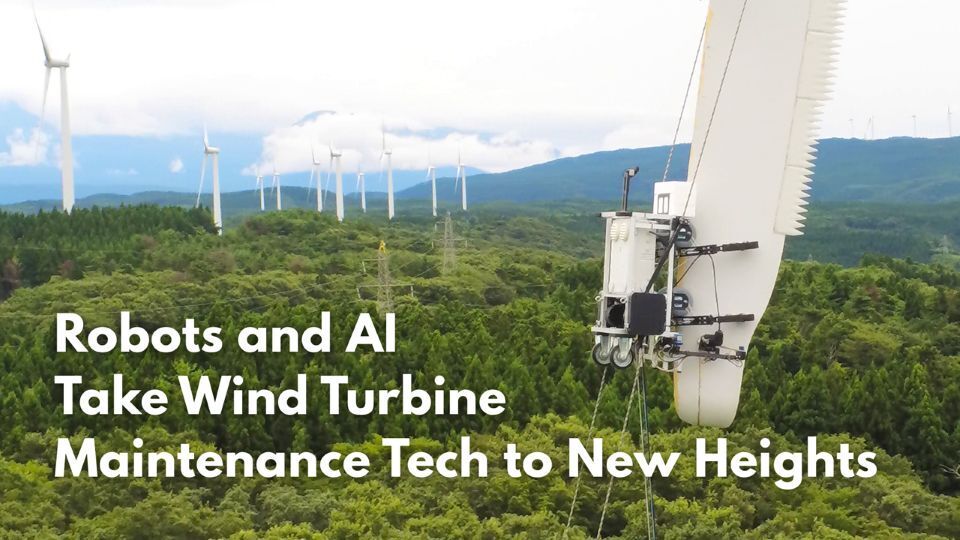The city of Makinohara in Shizuoka Prefecture is one of Japan’s foremost tea-producing areas. Today, some of the city’s tea fields are producing something new: carbon credits, which other entities can purchase to offset greenhouse gas emissions. The key to this effort is charcoal made from tea bushes felled in abandoned fields. Read on to learn more about this initiative, which both addresses global warming and helps to revitalize the region.

The Makinohara Plateau in northern Makinohara, Shizuoka, has long been renowned for its tea production. Today, it is home to a project seeking to improve the soil and create carbon credits by mixing charcoal into the fields.
As the need to address climate change grows in urgency, countries around the world are turning to carbon credit–based decarbonization initiatives. Carbon credits represent greenhouse gas emissions that are reduced, sequestered, or avoided. Selling them to other parties seeking to offset their own emissions makes it possible to impart new economic value to emissions reduction efforts that generate little income on their own. Experiments are underway across Japan to create sustainable communities and revive local agriculture using this basic mechanism.
One example can be found on the Makinohara Plateau, which is located in central Shizuoka Prefecture. The plateau’s soil is weakly acidic and rocky, with good drainage, while its climate is warm with many hours of sunlight. These conditions have made Makinohara one of Japan’s preeminent tea-producing areas, renowned as a source of quality tea since the latter half of the 19th century.
In recent years, however, stagnating tea prices, soaring processing costs, and the overall aging of the population have driven many farmers out of the tea industry, reducing the extent of tea fields cultivated. In 2015, some 2,100 hectares of tea fields were under cultivation in Makinohara, but in 2020, that figure had fallen to 1,600 hectares, and is currently estimated to be lower than 1,000 hectares. Some of these former tea fields have been used by farmers to diversify into other crops, but other fields simply lie fallow.
Seeking a solution to this problem, in fiscal 2022, the city of Makinohara launched the “Organic Makinohara Promotion Project.” The program aims to stabilize agricultural operations by promoting “environmentally conscious farming” and “revenue generation from abandoned farmland,” as well as to “create new industries rooted in agriculture.”

Charcoal made from felled tea bushes. Mixing charcoal into the soil improves its moisture retention and water and air permeability, all of which helps plants grow.
As part of this project, an initiative is currently underway to repurpose fallow tea fields after improving their soil with charcoal. Abandoned tea bushes from the fields are uprooted and turned into charcoal, which is then mixed into the original soil, making it useful for growing other crops. This initiative is being led by a startup named SynCom Agritech Co., Ltd.
“Tea bushes love nitrogen, so growing quality tea requires a lot of nitrogenous fertilizer,” says YAMAMURA Eiji, CEO of SynCom Agritech. “However, this nitrogen makes the soil acidic, so to produce other crops, you need to make the soil more alkaline again. Adding charcoal is one way to adjust the pH of acidic soil.”
Charcoal is a porous material, riddled with countless tiny holes. The microorganisms that live in these pores help make the soil more fertile. Turning tea bushes into charcoal also locks up the carbon in the wood, and storing this in the soil reduces the amount of CO2 released into the atmosphere. According to Yamamura, around two tons of CO2 emissions can be avoided per ton of charcoal, which makes the creation of carbon credits possible. In 2025, the initiative was officially registered under the J-Credit Scheme, Japan’s carbon credit system.

Felled tea bushes dry in an abandoned tea field. After several months of drying right in the field, they will be turned into charcoal using a portable charcoal burner.

Making charcoal. Because the vaporized wood gas burns in mid-air, the wood piled up below ends up anoxic and “steamed,” which makes it become charcoal rather than ash.
Alongside this initiative, producers in Makinohara have begun cultivating a new crop to join tea as one of the region’s local specialties: lemons. Here, too, charcoal helps improve the soil and aid the shift from tea fields to lemon groves, and creating carbon credits from these groves is another long-term goal. Growing lemons is easier for older farmers in several ways. First, they can be cultivated alongside tea, since the harvest seasons of the two crops do not overlap. Second, lemons have a long harvest season, lasting from November to February, so they can be harvested at a leisurely pace. Third, because lemons do not attract insects, they do not need to be sprayed with insecticide.

Lemons ripen in converted fields. Makinohara is also popular with surfers, so the plan is to promote these lemons under the brand “Naminori,” meaning “wave-rider.”

A city official assigned to the Organic Makinohara Promotion Project (left) and NISHITANI Mitsuo, a tea farmer assisting with converting fields for lemon cultivation.

YAMAMURA Eiji, CEO of SynCom Agritech Co., Ltd.
When asked about future plans, Yamamura explains, “Demand for Japan-grown lemons is high, and eliminating pests and similar tasks are less time-intensive for lemons than for other fruit. Presenting these lemons as a contribution to decarbonization will increase their added value, and we can also offset the costs of conversion by selling credits, thus boosting the income of producers. The idea of using charcoal in tea fields is already spreading to nearby cities like Kakegawa and Kikugawa, and could help revitalize agriculture across Shizuoka.”
SynCom Agritech is now hoping to achieve “highly profitable and sustainable organic agriculture” based on this initiative in Makinohara, with several projects underway around the world. The Makinohara initiative and its carbon credits should serve as a starting point for opening up new possibilities for revitalizing regional economies and achieving a decarbonized society.






























